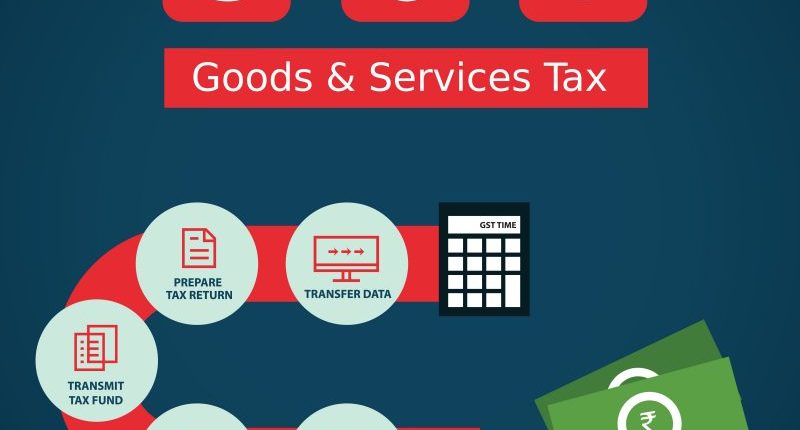Goods and Services Tax Network (GSTN) has allowed the filing of nil GSTR-1 via an SMS using mobile phones. Last month, the same facility was launched on 8th June 2020 for the nil GSTR-3B filing.
In its press release dated 27th June 2020, the Finance Ministry said that the move will benefit close to 12 lakh registered taxpayers and has become effective since 1st July 2020. These taxpayers currently have to log in to their account on the portal and then file their outward supply statement in form GSTR-1 every month or every quarter.
Through logging into their GSTIN account, and navigating to Services > Returns > Track Return Status, they can monitor the status update of the filed statement or return the application on the GST portal.
Taxpayers returning to file with nil form GSTR-3B can benefit from the SMS facility. The taxpayers who want to file a nil statement in their form GSTR-1 must send an SMS to 14409 by typing ‘NIL<space>R1<space>GSTIN<space>Tax period in MMYYYY’ to first activate the SMS facility.
The user will then receive a six-digit code with a validity of up to thirty minutes and can confirm their filing of nil statements by sending: ‘CNF<space>R1<space>Code’ to 14409. Upon submitting the confirmation, returns will be filed after due validation by the GSTN, and taxpayers will receive an acknowledgement number via SMS.
Similarly, taxpayers can also file their nil return in form GSTR-3B using the same steps, but in their SMS to 14409, they must use ‘3B’ instead of ‘R1’. One should note that for any given tax period, no data should have been in the ‘Save or ‘Submitted’ stage on the GST portal while using the SMS facility.
Also Read: Can Accumulated ITC Refund be Allowed on Invoices, Not in GSTR-2A?
A nil GSTR-1 is filed when there are no outward supplies for any given month or quarter. Such supplies include inward supplies where tax needs to be paid under reverse charge basis, zero-rated supplies, deemed exports, credit notes or debit notes or amendments to them, advances received on services declared or adjusted.
Any GST registered taxpayer can use the SMS facility to file GSTR-1, irrespective of the type of registration, annual turnover or frequency of filing GSTR-1. However, the authorised signatory and his/her mobile phone number must have been declared on the GST portal. If the user faces any issue, then an SMS in the following format can be sent to 14409 from the registered mobile number: ‘HELP<space>Return type(R1 or R3B)’.
Apart from this new facility, the GSTN has made several modifications and improvements to the present GST return system on the GST portal.
From 15th July 2020, GSTR-2A will have fields to highlight certain crucial information about suppliers’ filing such as the date of filing of GSTR-1, GSTR-3B filing status, GSTR-1 tax period, invoice amendment flag and the type of change, etc. Further, two new fields’ IMPG’ and ‘IMPEG’ will be incorporated in GSTR-2A from 15th August 2020. These will capture the IGST credits from ICEGATE and reduces the discrepancies in input tax credit reported on the ICEGATE and GSTR-3B. It minimises the manual efforts involved in comparing with every bill of entry.
Further, the validation for delinking credit-debit notes from their original invoices will be implemented from 21st July 2020 in several returns. It will resolve the long-standing problem that users faced while preparing their GSTR-3B returns. Mostly, taxpayers issue a single credit note in case of bulk discount against multiple invoices.
However, they were unable to upload details of each of such invoice on the portal in form GSTR-1, resulting in non-adjustment and payment of more taxes to the government. With this validation in place, credit note details can be declared as standalone information without linking it to the invoice. The GST legislation had allowed this long back, and it will now be added as validation on the GST portal. Other returns supporting this validation include GSTR-2A, GSTR-6A, and GSTR-4A, to be implemented from different dates of July and August 2020.
Another GST portal feature to be live from 7th July 2020 is the auto-calculation of the liability in GSTR-3B taking values from GSTR-1. It will potentially reduce the mismatches or discrepancies between the two returns, provided GSTN allows negative values in GSTR-3B. However, a clarification is awaited on the manner of computation for quarterly filers of GSTR-1 and whether GSTR-3B can be edited for these auto-populated values.
GSTN, along with Infosys, has been bringing several significant improvements in the present filing system of GST to enhance the user experience. The current set up may, therefore, continue through the year 2020 before the new GST return system kicks in.
For any clarifications/feedback on the topic, please contact the writer at annapoorna.m@cleartax.in
Annapoorna, popularly known as Anna, is an aspiring Chartered Accountant with a flair for GST. She spends most of her day Singing hymns to the tune of jee-es-tee! Well, not most of her day, just now and then.





